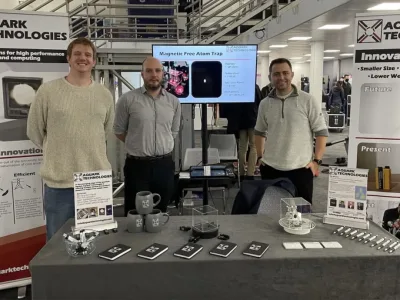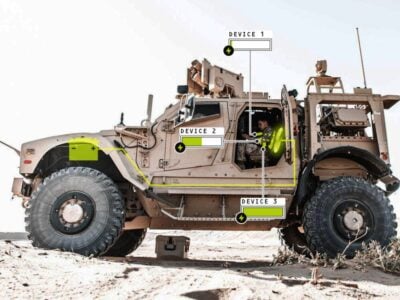Home sweet smart home
Five years ago, people were starting to hear about the electronic electricity meter, or eMeter. Why are people interested in an eMeter? An eMeter can report electricity usage faster, cheaper, and more reliably than the traditional mechanical counterparts that have been utilized in the past. The long term cost savings for utility companies using an eMeter balances out the high cost of a system wide infrastructure upgrade. Throw in some government assistance and incentives and it is a “no brainer.”
The first eMeters were based on 8- or 16-bit microcontrollers (MCUs), such as the Texas Instruments (TI) ultra-low-power MSP430 MCU, with either embedded or discrete analog for electricity usage measurement (metrology) or for varied types of communication depending on geography, utility requirements, and overall goals.

Figure 1: TI offerings for optimized smart grid solutions.
The list of possible connected parts of a smart home network is rapidly growing. In a quick search of the Internet, a customer can find electric, water, and gas meters all offering smart connectivity. But now, commercial and consumer level products are taking advantage in spaces that include heating, venting and air conditioning (HVAC), lighting control, security, smoke alarm detection, electric vehicle chargers, and a host of smart appliances (for example, refrigerators offering touch screens for users to monitor home energy use, surf the Internet for a recipe, or watch television in real time). These new smart connected devices are joining the network of a smart home to provide the possibility of a futuristic George Jetson-like home. Okay, maybe without Rosie the Robot (not yet, anyway).
What is the potential of a truly connected smart home? A large part of that depends on the home owner, but today there is development moving towards a highly connected, user-friendly home. In areas or times when the electricity grid is strained, the utility, with permission, can reach out to homes or businesses to adjust items such as appliance usage, HVAC settings, and other activities to keep from rolling brown outs or charging peak rates. Other activities falling into the category of conveniences include using your smart phone or work computer to adjusting your thermostat when you’re not at home, sending an alert to you if a window is left opened and/or unlocked, or monitoring the movement of a grandparent. The possibilities with a connected smart home are endless.

Figure 2: Examples of a smart home complete with smart appliances and in home displays.
I know everyone has heard this before. It brings back memories of things like Disneyland’s “House of the Future.” To make this possible, one approach is for the eMeter to upgrade to a Smart eMeter, meaning transitioning from a single network to multiple networks. In the past, a single wireless network like ZigBee or wired power line communication (PLC) was all that was needed to report back to the utility. But to achieve the ability to connect to multiple devices and actually operate those devices, it’s necessary to build multiple networks on top of each other in order for the networks to communicate simultaneously. For example, Wi-Fi, sub 1.0 GHz, 2.4 GHz, and Ethernet can all possibly be used in the same system. This drives the need to run highly sophisticated software. There has been a movement to high-end real-time operating systems (RTOSs), from vendors such as Mentor Graphics and Green Hills, or high-level operating systems (HLOSs), such as Android, Linux or Windows Embedded CE. When you combine these operating systems with increased software stack sizes to accommodate these many types of communications, embedded designs are suddenly based on 32-bit MCUs, such as TI’s Stellaris ARM Cortex- M3 MCUs, with large embedded flash sizes and external memory interfaces, or even TI’s 32-bit microprocessor (MPU) offerings, the Sitara ARM Cortex-A8 or ARM9 MPUs.

The ARM Cortex-A8 is the first processor to incorporate a variety of technologies that make it ideal for the smart home use. These technologies include TrustZone security technology, the Thumb-2 instruction set and Jazelle-RCT for fast and efficient Java execution. All of these attributes as well as high flexibility with horse power make the Cortex-A8 an ideal fit for embedded smart home systems.
Not only is ARM helping to drive the technology forward, but major semiconductor companies, including TI, are contributing their technology as well. We are seeing the introduction of “combo ICs” as a welcome and much-needed next step. We’ve already seen superscalar combo-processors that enable Internet-ready applications to share rich media content among a variety of devices connected to the smart home network. These combo ICs include Bluetooth/Wi-Fi and Bluetooth/WIMAX/Wi-Fi among the many fascinating combinations readily available.
Another driving force behind the widespread acceptance of the smart home network is the security advancements. The smart electric grid is not only an amazing tool and feat, but a large liability. The U.S. government is working to ensure regulations are in place to keep the grid safe from terrorists, miscreant hackers, and others who may pose a threat. As the grid becomes smarter and more highly connected, it becomes a significant challenge compared to the mechanical versions.
A solution to resolve the security issue would be to move the smart grid to a cloud. Just recently, Verizon announced that it has teamed up with key players in smart grid technology to offer cloud-based Smart eMeter services. Moving to the cloud not only helps provide security, but the utility companies like it because of reduced upfront capital investment.
When you consider the aging infrastructure in this country, the need to combat global warming, and the need to use all of our energy more wisely, eMetering or Smart eMeters are ideal solutions with financial backing available from Washington. In 2007, President Obama signed into legislation a clean energy bill that included $4.5 billion in direct spending to modernize the current power grid networks with smart grid technologies. Additionally, a whole new generation of electric vehicles from Detroit is ready to make its grand entrance. Putting electric vehicles on the road benefits everyone – not only for the obvious environmental reasons, but electric vehicles also have the ability to even out the differences between the peaks and valleys in electricity demand making the utility companies and rate payers much happier.
As we transition from the eMeter to implementing Smart eMeters, users will be empowered with a truly connected home to save on cost, provide entertainment and daily life conveniences, and be environmentally friendly, making their own home a “home sweet smart home” indeed.
About the author
Sean Murphy is a manager for Focus End Equipments- Commerical human machine interface (HMI) for the Sitara ARM microprocessor business unit at Texas Instruments. His responsibilities include defining new solutions, developing reference designs, and shaping the Sitara ARM MPU roadmap for Commerical HMI applications.
In previous roles at TI, Murphy has served as a product marketing manager for the Sitara ARM MPU business and business development manager, focusing on the MSP430, C2000, and Stellaris Cortex-M3 microcontroller market and a test engineer.
Murphy received a Bachelor of Science in electronic engineering from Texas A&M University.
 If you enjoyed this article, you will like the following ones: don't miss them by subscribing to :
eeNews on Google News
If you enjoyed this article, you will like the following ones: don't miss them by subscribing to :
eeNews on Google News



